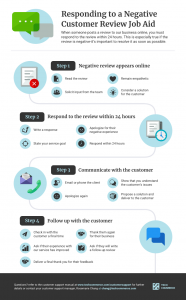Are you a business owner who has thought about taking your business international? If so, what is stopping you? Do you believe that only enterprise-level businesses can succeed overseas?
The fact is that a whooping 98 percent of exporters in the U.S. are actually small and medium sized businesses.
And, for good reason. Going global allows you to have a diversified and expanded customer base. As a result, exporters are able grow faster and are less likely to go out of business. It also makes you more competitive and ensures that you’ll have cash flowing in case of changing market tastes or unstable home conditions.
While going international definitely has its perks, not every business may be ready to do so. So before blindly entering the global market, you should first make sure that you have what it takes.
You’ve analyzed your bottom line.
Before getting too far ahead of yourself, go over your bottom line. You want to make sure that you have the resources, capital, staff, scaleability, and reputation to take your company global.
It’s going to take time and money to go international. If you don’t have the bottom line to properly conduct market research, for example, then you should probably wait until you have the resources to do so.
You have the capabilities, but you’re not busy.
Let’s say that you manufacture umbrellas. One day you walk your factory floor and notice that your employees are just hanging around. Even though you’re cable of producing hundreds of umbrellas a day, you just don’t have enough work to keep your team busy.
If you want to get those production lines moving and keep your workers busy, then definitely look at overseas markets.
International customers are beating down your door.
Not literally, of course. But, have you noticed an influx of daily emails from global customers asking if your business is available in their country? When you attend industry events, like trade shows, are you constantly approached by international visitors?
If so, then it’s time to start conducting some market research to see if there’s an opportunity in these international markets. I’ll discuss this in more detail momentarily.
One final note here. You don’t necessarily have to wait for prospective international customers to contact you. If you’ve been monitoring your business, there could be social mentions of people using your products/services differently than what you intended. Reach out to these individuals to see how they use your business in their everyday lives. This could lead the way to discovering a new market.
You’re experiencing a sales plunge.
You’ve done everything right. You’ve created an awesome product or service, have been engaging with your audience, and have provided excellent customer service. Yet, sales are starting to drop.
What’s the deal?
The culprit is that your market is maturing. It’s no fault of yours. It’s because of competitors or new and disruptive innovations. It also could be because you’ve saturated the market and don’t have many prospective customers left.
If you notice this, then it’s time to look overseas. If you wait too long, you’ll appear desperate.
It’s time to reduce your dependence on existing markets.
Think long-term. Business may be booming now, but what about five years from now? How about ten years from now?
While you can’t predict the future, you can ensure that in case anything goes wrong domestically, such as slowdowns, economic headwinds, or seasonal problems, you still have your international customers to keep your business operational.
You’ve done your due diligence.
Think market research.
You want to make sure that your products/services will sell overseas. Start by examining the success or failure stories of businesses similar to yours and understanding your target audience.
Furthermore, you want to be aware of all possible hurdles. This includes:
- Language and cultural barriers.
- Tax codes and compliance issues.
- Local competition.
- Working at slower pace.
Doing your homework ensures that there’s not only demand, but also that introducing your business to a new audience will be as smooth as possible.
For example, outside of the U.S., Dominos sells the most pizza in India. This has been possible because the company understood that customers love shared plates, but also had to strike a balance between “serving local needs and retaining a patina of Western ‘cool.’”
Without conducting this type of research, Dominos probably wouldn’t have had this success in India.
Tips for when you are ready to go international.
Are you ready to go international? Here’s a couple of pointers to get you started.
- Before going international, prepare an international business plan. This will evaluate needs, set your goals, and ensure that you have the resources to go global.
- Again, conduct though market research and learn about the culture of your new market. Use resources like the Department of Commerce and local partners who can inform you about the culture, laws, and can contact with you local business contacts.
- If you sell products, determine how you’ll distribute your product. This could be opening a company-owned foreign subsidiary to working with agents, representatives, and distributors to setting up a joint venture.
- Determine how you’ll price your products and be prepared to negotiate deals and navigate the murkiness of legal exporting.
- Locate foreign and private sources of financing, like the Export-Import Bank of the United States. Also don’t forget to find a payment platform that allows you to accept global payments, while being complaint.
- Finally, start selling your goods or services in your new market. But, don’t forget to follow regulations when packaging and labeling since they can vary from country to country.
Still not sure if you have what it takes to go international?
Then, take the SevenTudes Survey. It’s not an exact science, but it can help let you know if you have the attitude, aptitude, magnitude, latitude, rectitude, exactitude, and fortitude to decide if you are ready to go international.
Business & Finance Articles on Business 2 Community
(43)






